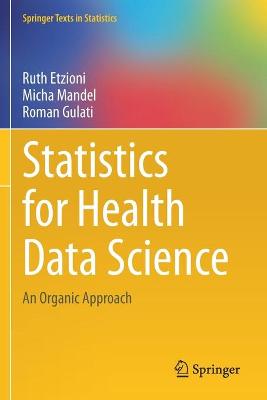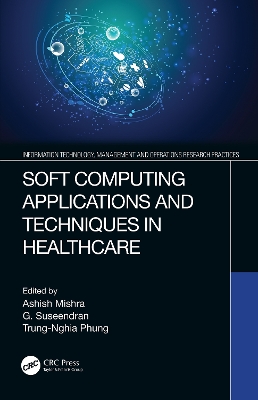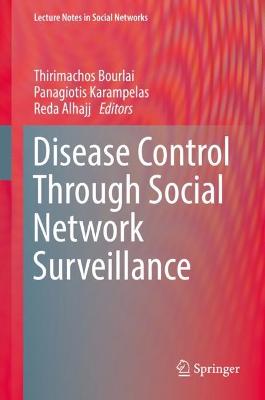Statistics for Health Data Science
 portes grátis
portes grátis
Statistics for Health Data Science
An Organic Approach
Gulati, Roman; Etzioni, Ruth; Mandel, Micha
Springer Nature Switzerland AG
01/2022
222
Mole
Inglês
9783030598914
15 a 20 dias
379
Descrição não disponível.
Chapter 1: Introduction: Data science, statistics, and big data in healthExamples of the "new" health services, delivery and outcomes data including surveys, claims and EMR's. Examples of the big questions that can be addressed. Data Science versus statistics, big databases versus big data, prediction versus inference. Characteristics of health care utilization data. What does health care cost? Different ways of quantifying health care costs. Characteristics of health cost data.
Chapter 2: The new health care data: surveys, medical claims and EMR'sSurveys, Medical Claims, EMR's: characteristics and challenges. Examples of studies based on the different types of data resources. Strengths and weaknesses of each. Tips for quality control. Possibly: An overview of issues in processing unstructured data and linking databases
Chapter 3: Basic statistical background useful for analysis of health care costs and utilizationThe generic inference problem. Some useful statistical distributions. Conditional and marginal probability. Least squares and maximum likelihood. Hypothesis testing and discussion about p-values. Statistical power.
Chapter 4: Conceptual models for health care utilization and costs Anderson-Newman model, variants and extensions.
Chapter 5: Linear regression for observational studiesConfounding, Mediation and Moderation. Difference in difference models. Impact of violating OLS assumptions
Chapter 6: Nonlinear models 1: Binary outcomes and choice models Probit models. Logistic models and conditional logistic models. Multinomial logit regression models and ordered logit models. The method of recycled predictions.
Chapter 7: Nonlinear models 2: Models for count outcomes Log-linear models for count outcomes. Poisson and negative binomial regression. Models for individual and population counts. Zero-inflated and zero-truncated models. Generalized Linear Models.
Chapter 8: Risk adjustmentConstructing comorbidity and risk adjustment variables using claims data. Computing Q/E ratios. Using O/E ratios for profiling facilities.
Chapter 9: Models for skewed health costsLog-normal models for skewed costs. Duan's method of smearing for lognormal data. The difference between modeling the log of Y (lognormal models for costs) and log(E(Y)) log-linear models for count outcomes. Gamma models as an alternative to lognormal models for cost data. Cross-validation for model selection.
Chapter 10: Two-part models for costs and countsZero-inflated Poisson and negative binomial models. Two part models (logit-normal or logit-gamma) for cost outcomes. Cross-validation for model selection.
Chapter 11: The bootstrap: General principles and use in variance estimation for two-part modelsDoes the normality assumption matter? Using the bootstrap to examine the properties of regression coefficient estimates in large sample. Different types of bootstrap confidence intervals. Extending the bootstrap to compute the variance of the marginal effects in the two-part model.
Chapter 12: Survey data analysisExamples of Health Surveys. Complexity of Health Surveys. Simple Random Sampling. Stratified Sampling. Post-Stratification. Other methods for dealing with missing data. Cluster Sampling. Sample Weights: when to use or not to use? Ratio estimation, linearization and variance estimation
Chapter 13: Machine learning methods for predictionPredictive analytics versus statistical inference. Simple classification and discrimination algorithms. Trees, bagged models, random forests and boosting. Adjustments for rare outcomes. Regularization. Penalized regression and the LASSO. Prediction versus estimation versus inference.
Chapter 14: Comparative Effectiveness and causal inference. Defining comparative effectiveness. The problem of selection bias or confounding by indication. General framework for causal inference. Inverse probability weighting and its applications. Instrumental variables, their potential and their limitations
Chapter 2: The new health care data: surveys, medical claims and EMR'sSurveys, Medical Claims, EMR's: characteristics and challenges. Examples of studies based on the different types of data resources. Strengths and weaknesses of each. Tips for quality control. Possibly: An overview of issues in processing unstructured data and linking databases
Chapter 3: Basic statistical background useful for analysis of health care costs and utilizationThe generic inference problem. Some useful statistical distributions. Conditional and marginal probability. Least squares and maximum likelihood. Hypothesis testing and discussion about p-values. Statistical power.
Chapter 4: Conceptual models for health care utilization and costs Anderson-Newman model, variants and extensions.
Chapter 5: Linear regression for observational studiesConfounding, Mediation and Moderation. Difference in difference models. Impact of violating OLS assumptions
Chapter 6: Nonlinear models 1: Binary outcomes and choice models Probit models. Logistic models and conditional logistic models. Multinomial logit regression models and ordered logit models. The method of recycled predictions.
Chapter 7: Nonlinear models 2: Models for count outcomes Log-linear models for count outcomes. Poisson and negative binomial regression. Models for individual and population counts. Zero-inflated and zero-truncated models. Generalized Linear Models.
Chapter 8: Risk adjustmentConstructing comorbidity and risk adjustment variables using claims data. Computing Q/E ratios. Using O/E ratios for profiling facilities.
Chapter 9: Models for skewed health costsLog-normal models for skewed costs. Duan's method of smearing for lognormal data. The difference between modeling the log of Y (lognormal models for costs) and log(E(Y)) log-linear models for count outcomes. Gamma models as an alternative to lognormal models for cost data. Cross-validation for model selection.
Chapter 10: Two-part models for costs and countsZero-inflated Poisson and negative binomial models. Two part models (logit-normal or logit-gamma) for cost outcomes. Cross-validation for model selection.
Chapter 11: The bootstrap: General principles and use in variance estimation for two-part modelsDoes the normality assumption matter? Using the bootstrap to examine the properties of regression coefficient estimates in large sample. Different types of bootstrap confidence intervals. Extending the bootstrap to compute the variance of the marginal effects in the two-part model.
Chapter 12: Survey data analysisExamples of Health Surveys. Complexity of Health Surveys. Simple Random Sampling. Stratified Sampling. Post-Stratification. Other methods for dealing with missing data. Cluster Sampling. Sample Weights: when to use or not to use? Ratio estimation, linearization and variance estimation
Chapter 13: Machine learning methods for predictionPredictive analytics versus statistical inference. Simple classification and discrimination algorithms. Trees, bagged models, random forests and boosting. Adjustments for rare outcomes. Regularization. Penalized regression and the LASSO. Prediction versus estimation versus inference.
Chapter 14: Comparative Effectiveness and causal inference. Defining comparative effectiveness. The problem of selection bias or confounding by indication. General framework for causal inference. Inverse probability weighting and its applications. Instrumental variables, their potential and their limitations
Este título pertence ao(s) assunto(s) indicados(s). Para ver outros títulos clique no assunto desejado.
Analytic Methods;Biostatistics;Data Science;Epidemiology;Health Care Databases;Health Data Analytics;Health Economics;Health Outcomes;Health Services;Machine Learning;Medical Claims;Medical Claims Data;Models;Prediction;Predictive Modeling;Public Health;Regression;Risk;Statistical Analysis;Surveys
Chapter 1: Introduction: Data science, statistics, and big data in healthExamples of the "new" health services, delivery and outcomes data including surveys, claims and EMR's. Examples of the big questions that can be addressed. Data Science versus statistics, big databases versus big data, prediction versus inference. Characteristics of health care utilization data. What does health care cost? Different ways of quantifying health care costs. Characteristics of health cost data.
Chapter 2: The new health care data: surveys, medical claims and EMR'sSurveys, Medical Claims, EMR's: characteristics and challenges. Examples of studies based on the different types of data resources. Strengths and weaknesses of each. Tips for quality control. Possibly: An overview of issues in processing unstructured data and linking databases
Chapter 3: Basic statistical background useful for analysis of health care costs and utilizationThe generic inference problem. Some useful statistical distributions. Conditional and marginal probability. Least squares and maximum likelihood. Hypothesis testing and discussion about p-values. Statistical power.
Chapter 4: Conceptual models for health care utilization and costs Anderson-Newman model, variants and extensions.
Chapter 5: Linear regression for observational studiesConfounding, Mediation and Moderation. Difference in difference models. Impact of violating OLS assumptions
Chapter 6: Nonlinear models 1: Binary outcomes and choice models Probit models. Logistic models and conditional logistic models. Multinomial logit regression models and ordered logit models. The method of recycled predictions.
Chapter 7: Nonlinear models 2: Models for count outcomes Log-linear models for count outcomes. Poisson and negative binomial regression. Models for individual and population counts. Zero-inflated and zero-truncated models. Generalized Linear Models.
Chapter 8: Risk adjustmentConstructing comorbidity and risk adjustment variables using claims data. Computing Q/E ratios. Using O/E ratios for profiling facilities.
Chapter 9: Models for skewed health costsLog-normal models for skewed costs. Duan's method of smearing for lognormal data. The difference between modeling the log of Y (lognormal models for costs) and log(E(Y)) log-linear models for count outcomes. Gamma models as an alternative to lognormal models for cost data. Cross-validation for model selection.
Chapter 10: Two-part models for costs and countsZero-inflated Poisson and negative binomial models. Two part models (logit-normal or logit-gamma) for cost outcomes. Cross-validation for model selection.
Chapter 11: The bootstrap: General principles and use in variance estimation for two-part modelsDoes the normality assumption matter? Using the bootstrap to examine the properties of regression coefficient estimates in large sample. Different types of bootstrap confidence intervals. Extending the bootstrap to compute the variance of the marginal effects in the two-part model.
Chapter 12: Survey data analysisExamples of Health Surveys. Complexity of Health Surveys. Simple Random Sampling. Stratified Sampling. Post-Stratification. Other methods for dealing with missing data. Cluster Sampling. Sample Weights: when to use or not to use? Ratio estimation, linearization and variance estimation
Chapter 13: Machine learning methods for predictionPredictive analytics versus statistical inference. Simple classification and discrimination algorithms. Trees, bagged models, random forests and boosting. Adjustments for rare outcomes. Regularization. Penalized regression and the LASSO. Prediction versus estimation versus inference.
Chapter 14: Comparative Effectiveness and causal inference. Defining comparative effectiveness. The problem of selection bias or confounding by indication. General framework for causal inference. Inverse probability weighting and its applications. Instrumental variables, their potential and their limitations
Chapter 2: The new health care data: surveys, medical claims and EMR'sSurveys, Medical Claims, EMR's: characteristics and challenges. Examples of studies based on the different types of data resources. Strengths and weaknesses of each. Tips for quality control. Possibly: An overview of issues in processing unstructured data and linking databases
Chapter 3: Basic statistical background useful for analysis of health care costs and utilizationThe generic inference problem. Some useful statistical distributions. Conditional and marginal probability. Least squares and maximum likelihood. Hypothesis testing and discussion about p-values. Statistical power.
Chapter 4: Conceptual models for health care utilization and costs Anderson-Newman model, variants and extensions.
Chapter 5: Linear regression for observational studiesConfounding, Mediation and Moderation. Difference in difference models. Impact of violating OLS assumptions
Chapter 6: Nonlinear models 1: Binary outcomes and choice models Probit models. Logistic models and conditional logistic models. Multinomial logit regression models and ordered logit models. The method of recycled predictions.
Chapter 7: Nonlinear models 2: Models for count outcomes Log-linear models for count outcomes. Poisson and negative binomial regression. Models for individual and population counts. Zero-inflated and zero-truncated models. Generalized Linear Models.
Chapter 8: Risk adjustmentConstructing comorbidity and risk adjustment variables using claims data. Computing Q/E ratios. Using O/E ratios for profiling facilities.
Chapter 9: Models for skewed health costsLog-normal models for skewed costs. Duan's method of smearing for lognormal data. The difference between modeling the log of Y (lognormal models for costs) and log(E(Y)) log-linear models for count outcomes. Gamma models as an alternative to lognormal models for cost data. Cross-validation for model selection.
Chapter 10: Two-part models for costs and countsZero-inflated Poisson and negative binomial models. Two part models (logit-normal or logit-gamma) for cost outcomes. Cross-validation for model selection.
Chapter 11: The bootstrap: General principles and use in variance estimation for two-part modelsDoes the normality assumption matter? Using the bootstrap to examine the properties of regression coefficient estimates in large sample. Different types of bootstrap confidence intervals. Extending the bootstrap to compute the variance of the marginal effects in the two-part model.
Chapter 12: Survey data analysisExamples of Health Surveys. Complexity of Health Surveys. Simple Random Sampling. Stratified Sampling. Post-Stratification. Other methods for dealing with missing data. Cluster Sampling. Sample Weights: when to use or not to use? Ratio estimation, linearization and variance estimation
Chapter 13: Machine learning methods for predictionPredictive analytics versus statistical inference. Simple classification and discrimination algorithms. Trees, bagged models, random forests and boosting. Adjustments for rare outcomes. Regularization. Penalized regression and the LASSO. Prediction versus estimation versus inference.
Chapter 14: Comparative Effectiveness and causal inference. Defining comparative effectiveness. The problem of selection bias or confounding by indication. General framework for causal inference. Inverse probability weighting and its applications. Instrumental variables, their potential and their limitations
Este título pertence ao(s) assunto(s) indicados(s). Para ver outros títulos clique no assunto desejado.







